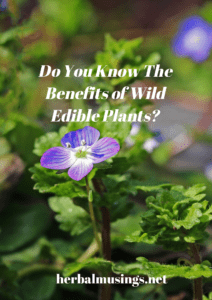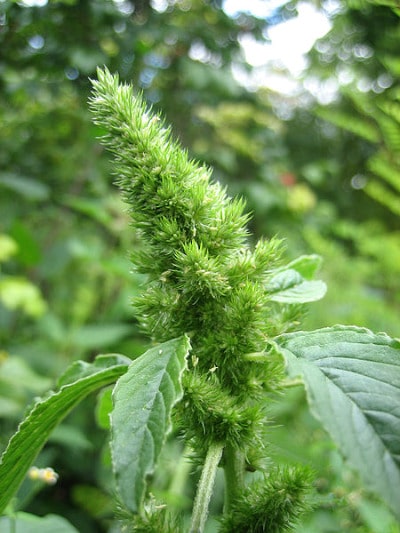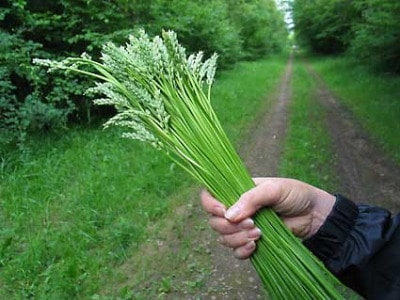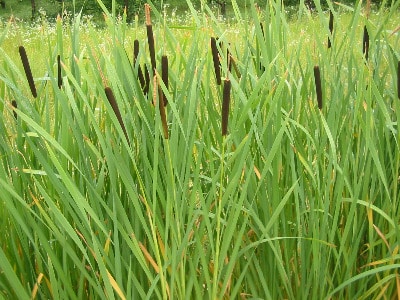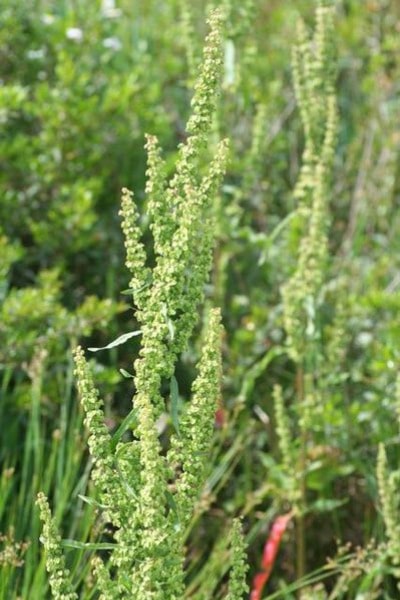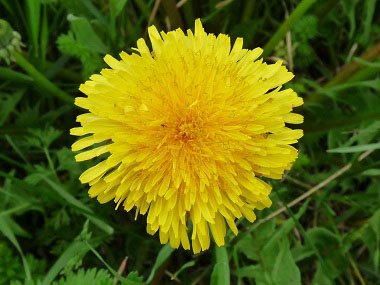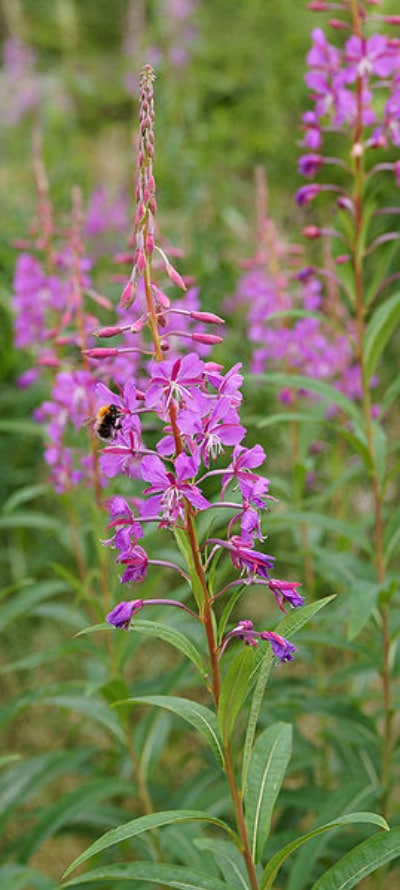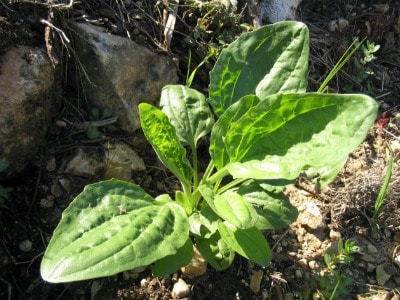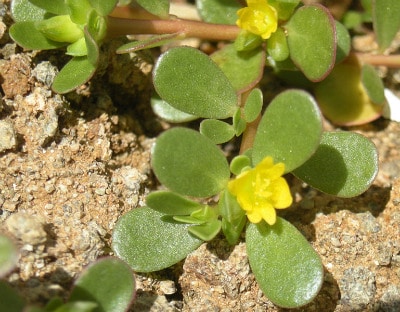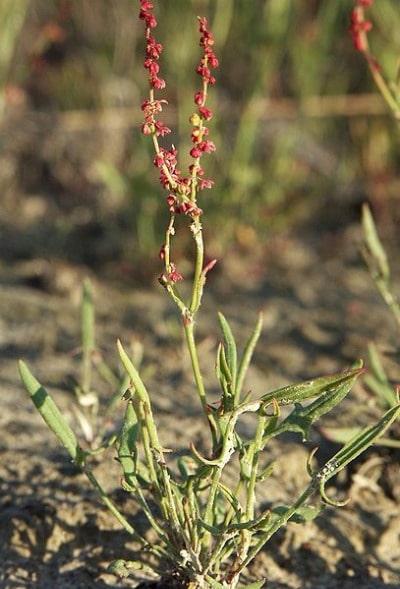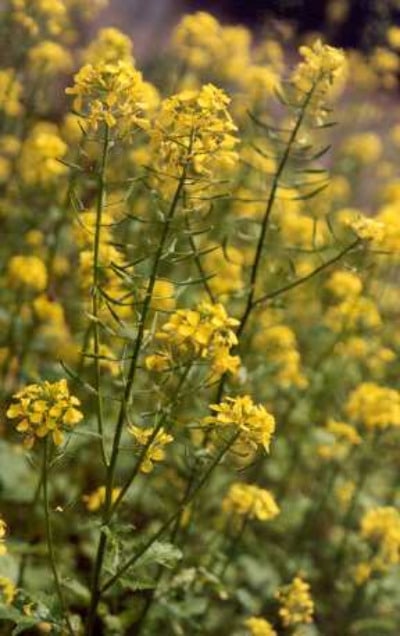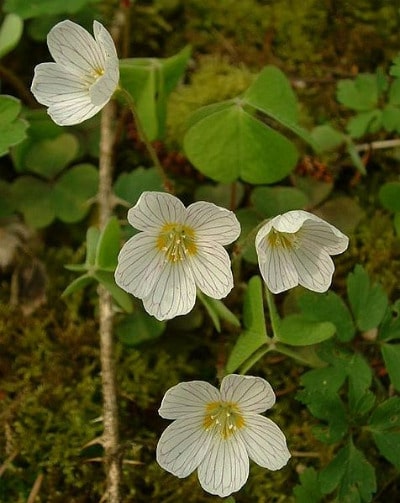Think about this, you’re hiking and get lost, now you have to be in the woods for several hours or days. What are you going to do for food? In comes wild edibles! There are always plants to eat when you know what to look for. Never go hiking without a good plant identification book, a backpack with a small pot, a fire starter, a sharp knife, extra socks, a reflective blanket, and a jacket because you never know what can happen.
Never forage for wild edible plants near busy roads. Most plants absorb lead and other heavy metals from the toxic exhaust. And these toxins tend to settle in the soil even if the traffic no longer exists. Also, avoid areas that are or have been sprayed with pesticides. When foraging wild water plants, know the water source. This is especially important if you’re planning to eat the wild edible raw. Eating plants that have grown in contaminated water is the same as drinking contaminated water. Chemical and heavy metal pollution are also concerns that can’t be removed by cooking.
There are numerous benefits to eating wild edibles such as they are free. They are genetically stronger than other food and have longer root systems which make most weeds drought-resistant. Most edible plants and weeds are more nutritious than hybridized store produce.
Eating local wild plants means that the plant fights off the same organisms as your body, therefore, making them highly beneficial for your immune system.
There’s a sense of accomplishment, a deep feeling of satisfaction wildcrafting edibles. You become one with the plants and your surroundings, getting to know each plant intimately.
I highly recommend getting a copy of Peterson’s Edible Wild Plants this guide has pictures and great descriptions of the plants. I personally take this guide with me when I’m out in the field. You always want to make sure you are harvesting the right plants, as there are copycat plants, that to the novice look like what you want. But the copycat plants can be poisonous. Another excellent book is Edible Wild Plants: A North American Field Guide to Over 200 Natural Foods
Wild Edibles
Amaranth (Amaranthus retroflexus) is common in North America and has edible roots, leaves, and seeds. Roots are cut up and cooked as a vegetable, steamed or boiled. Its edible stem and leaves have healthy heart and kidney benefits and a sweet flavor similar to spinach when cooked. Pick the plants when they are small, 8″ or less so the leaves and stems are tender. Young leaves and stems can be eaten raw.
Asparagus (Asparagus officinalis) grows in the wild in most of North America. Wild asparagus has a much thinner stalk than the grocery-store variety. It’s a great source of vitamin C, thiamine, potassium, and vitamin B6. Eat it raw or boil it like you would your asparagus at home. Wild asparagus is found growing in the spring in clumps. Harvest 2-3 per grouping you don’t want to deplete the area of asparagus.
Burdock (Arctium lappa) consists primarily of carbohydrates, volatile oils, plant sterols, tannins, and fatty oils. Medium to large-sized plant with big leaves and purplish thistle-like flower heads. You can eat the leaves and the peeled stalks and peeled roots of the plant either raw or boiled. The leaves have a bitter taste, so boiling them twice before eating is recommended to remove the bitterness.
Cattails (Typha latifolia)) are usually found near the edges of freshwater wetlands. Most of a cattail is edible. You can boil or eat raw the rootstock, or rhizomes, of the plant. The rootstock is usually found underground. Make sure to wash off all the mud. The best part of the stem is near the bottom where the plant is mainly white. Peel the outer leaves off until you reach the white stem. This the tender part. Either boil or eat the stem raw. Boil the leaves like you would spinach. The dry spike can be broken open and the white fluffy seeds in the middle, once dried, make for incredible fire starting material.
It is extremely important to make sure the water is not polluted; don’t pick cattails where there is lot of human activity, horse riding, and so forth, as there may be harmful bacteria or even parasites in the water.
Clover (Trifolium repens) make sure you harvest young and fresh blossoms and leaves whether white, pink or red though white clover is the better tasting of them all. Besides tea, you can pan roast the blossoms until nice and crispy. The leaves are another matter. Young ones are digestible raw in small amounts, half a cup or so. Older leaves should be cooked.
Chicory (Cichorium intybus) grows in disturbed soils and fields. It’s a bushy plant with small blue, lavender, and white flowers. You can eat the entire plant. Pluck off the young leaves and eat them raw or boil them. The chicory’s roots will become tasty after boiling. And you can pop the flowers in your mouth for a quick snack.
Chickweed (Stellaria media) the leaves and white flowers on the plant are eaten. You can eat the leaves raw or boiled. They’re high in vitamins and minerals. Chickweed tastes like spinach. It grows in cool weather and is very prolific.
Curled Dock (Rumex crispus) is distinguished by a long, bright red stalk that can reach heights of three feet. You can eat the stalk raw or boiled. Just peel off the outer layers first. It’s recommended that you boil the leaves with several changes of water in order to remove its naturally bitter taste. Young tender stalks can be peeled and eaten raw, older leaves need to be boiled.
Dandelion (Taraxacum officinale) the entire plant is edible, roots, leaves, and flowers. Eat the leaves while they’re still young; mature leaves taste bitter. If you do decide to eat the mature leaves, boil them first to remove their bitter taste. Boil the roots before eating as well. You can drink the water you boiled the roots in as a tea and use the flower as a garnish for your dandelion salad.
Field Pennycress (Thalspi vulgaris) its growing season is early spring to late winter. You can eat the seeds and leaves of field pennycress raw or boiled. The whole plant can be eaten raw or boiled, the seeds have a peppery taste. Use 2 changes of water to remove the bitterness.
Fireweed (Epilobium angustifolium) you can identify fireweed by its purple flower and the unique structure of the leaves’ veins; the veins are circular rather than terminating on the edges of the leaves. It’s best eaten young when the leaves are tender. Mature fireweed plants have tough and bitter-tasting leaves. You can eat the stalk of the plant as well. The flowers and seeds have a peppery taste.
Plantain (Plantago Major) you can usually find plantains in wet areas like marshes and bogs, but they’ll also sprout up in alpine areas. The oval, ribbed, short-stemmed leaves tend to hug the ground. The leaves may grow up to about 6″ long and 4″ wide. It’s best to eat the leaves when they’re young. Like most plants, the leaves tend to get bitter tasting as they mature. Plantain is very high in vitamin A and calcium. It also provides a bit of vitamin C.
Purslane (Portulaca oleracea) can provide much needed vitamins and minerals in a wilderness survival situation. It’s a small plant with smooth fat leaves that have a refreshingly sour taste. Purslane grows from the beginning of summer to the start of fall. You can eat purslane raw or boiled. If you’d like to remove the sour taste, boil the leaves before eating.
Sheep Sorrel (Rumex acetosella) it’s a common weed in fields, grasslands, and woodlands. It flourishes in highly acidic soil. Sheep sorrel has a tall, reddish stem and can reach heights of 18 inches. Sheep sorrel contains oxalates and shouldn’t be eaten in large quantities. You can eat the leaves raw. They have a nice tart, almost lemony flavor.
White Mustard (Synapsis alba) you can eat all parts of the plant. The roots are edible but need to be fairly large. The core can be woody or crunchy and the outer rind will be mildly sweet. First-year roots are more tender than second-year and both have a slightly peppery taste. Leaves are eaten raw or cooked and have a hot, pungent flavor.
Wood Sorrel (Oxalis) is an incredible thirst quencher and is refreshing to eat. The leaves, flowers and immature green seed pods are all edible having a mild sour flavor. The leaves are a great source of vitamin C. The roots can be boiled they are starchy and taste a bit like a potato.
If you want to learn more about wild edible plants, make sure to grab your copy of Peterson’s Edible Wild Plants. I bring this guide everywhere with me when I’m out in the field!
